Cheonsuman Bay - Migratory Bird Sanctuary (천수만(철새도래지))
2021-05-21
Buseok-myeon & Gobuk-myeon, Seosan-si, Chungcheongnam-do
+82-41-661-8054
Cheonsuman Bay emerged as a habitat for migratory birds as a result of a reclamation project that was undertaken in 1984. A breakwater was built around this area, which created Ganwolho Lake and Bunamho Lake. Moreover, a vast agricultural land spanning 6,400 hectares was formed on what used to be a mud flat. The monthly average temperature of Cheonsuman Bay area between October and March is about 1.2 degree Celsius higher than inland areas at the same latitude because of its oceanic climate. Such geographical conditions have made Cheonsuman Bay an ideal wintering site for migratory birds.
Cheonsuman Bay is located midway along the migration route of birds migrating from northern Siberia or Manchuria to Southeast Asia. As a result, Cheonsuman Bay has become home to nearly 200 different species of migratory birds that can be watched all year round. In winter, the area becomes a wintering site for over 300 thousand ducks and wild geese, as well as a wide variety of endangered species like storks, spoonbills, mute swans, and white-naped cranes. Lucky birdwatchers might be able to witness the great spectacle created by tens of thousands of migratory birds flying in a flock over the Cheonsuman Bay area.
Yeonpo Beach (연포해수욕장)
2022-08-04
43 , Yeonpo 2-gil, Taean-gun, Chungcheongnam-do
+82-41-670-2114
Located on the Taean Coast, Yeonpo Beach has been a popular vacation spot since 1972. Yeonpo Beach is long and curved, providing a magnificent scenery. It is famous for having the longest period of seasonal operation in the country thanks to its relatively high water temperature as a result of the warm currents. The pine groves and oddly shaped rocks along the coastline make for a fine view.
Gwangjuho Lake (광주호)
2020-06-09
Chunghyo-dong, Buk-gu, Gwangju
+82-62-266-0032
Gwangjuho Lake is located at the base of the Mudeungsan Mountain, which creates a beautiful view. Many people come to the lake not only for the relaxing setting, but also for fishing. Near the upper stream of the lake there are beautiful arbors built during the Joseon dynasty that display the traditional garden culture of that time. One of these arbors is the Sikyeongjeong Pavilion, a historic site written about by Jeong Cheol, a famous statesman and poet during Joseon dynasty.
Busan Cheokpanam Hermitage (척판암 (부산))
2020-04-11
490-156, Jangan-ro, Gijang-gun, Busan
Cheokpanam Hermitage was initially built in 673 by a monk named Wonhyo, whose legend is still passed down, and was restored in 1938 by another monk named Gyeongheo. Nestled inside the forest on Bulgwangsan Mountain, the hermitage offers a splendid view of the its surroundings. It is located nearby Jangansa Temple, also built by Monk Wonhyo.
Jwagusan Recreational Forest (좌구산 자연휴양림)
2024-12-12
107, Sotjeommal-gil, Jeungpyeong-gun, Chungcheongbuk-do
+82-43-835-4551
Jwagusan Recreational Forest sits at the foot of Jwagusan Mountain, Jeungpyeong. The mountain resembles a sitting turtle, which symbolizes happiness and longevity. The mountain is a perfect match with the recreational forest. The forest is the ideal choice for one-day tours as well, since visitors can enjoy various experiences at the Jwagusan Forest Meditation House, the Jwagusan Meditation Cloud Bridge, or the Jwagusan Observatory.
The Jwagusan Forest Meditation House runs forest therapy programs, guided forest tours, and forest programs for pre-school aged children, making it a perfect destination for families with kids. Additionally, mountain leisure sports can be enjoyed at the zipline, snow sledding slope, and Forest Adventure Facility. Nearby, Samgi Reservoir and Jwagusan Mountain add to the unique atmosphere on a misty day. Jwagusan Recreational Forest is a comprehensive recreational and tourist destination, offering various programs in connection with sites nearby, including the recreational village, Samgi Reservoir, mountain biking course, and hiking trails. You can enjoy cultural experiences, build physical and mental strength, and relax, all in one place.
Sangju Yonghwasa Temple (용화사 (상주))
2020-02-04
10-13, Jeungchon 2-gil, Sangju-si, Gyeongsangbuk-do
+82-54-541-3551
The exact foundation of Yonghwasa Temple is unknown, although there are stories alluding to its foundation taking place during the reign of Silla King Munmu. The temple's main building is home to two treasures, Stone Standing Buddha in Jeungchon-ri (Treasure No. 118) and Stone Seated Buddha in Jeungchon-ri (Treasure No. 120). The temple site also features many other stone pagodas, lanterns, and fountains.
Historical site of General Chung Ki-ryong (Chunguisa Temple) (정기룡장군 유적지(충의사))
2022-08-10
230, Chungui-ro, Sangju-si, Gyeongsangbuk-do
+82-54-537-6095
Chunguisa Temple is home to the tablets of General Chung Ki-ryong, a great army general who led during the reign of Joseon King Seonjo. In 1974, the temple and related relics were designated as a Regional Cultural Asset Monument. The area was expanded in 1978 to include a museum which displays Relics Related to Jeong Gi-ryong, a designated Treasure. The temple also hosts a reenactment of the recovery of Sangjuseong Fortress every October.
Seongjubong Recreational Forest (성주봉자연휴양림)
2022-09-07
3, Seongjubong-ro, Sangju-si, Gyeongsangbuk-do
+82-54-541-6512
Seongjubong Recreational Forest is located in the foothills of Seongjubong Peak (alt. 606 m), and filled with a lush forest, clean water, and beautiful surroundings. The forest is equipped with basic facilities to maintain the natural environment and ambience for relaxation. Accommodation facilities include forest cabins, a training center, and camping sites. Additional amenities include seminar halls, a forest education center, pavilions, a water playground, and more. The forest also has walking trails of varying levels for all to enjoy.
Chojeongyaksu Mineral Spring (초정약수)
2022-07-29
Chojeong-ri, Cheongwon-gu, Cheongju-si, Chungcheongbuk-do
+82-43-201-2042
Located approximately 16 kilometers northeast of Cheongju City, Chojeongyaksu Mineral Spring is acknowledged as one of the three major mineral springs in the world. Chojeong Mineral Spring was discovered around 600 years ago and became nationally known ever since as the source of naturally carbonated water that has a piquant and cool taste. It is said that King Sejong (1397-1450, reign 1418-1450) visited the springs in 1444 and stayed here for 60 days to treat an eye infection. The daily yield of carbonated water here is 458 tons, which is used for producing natural soda drinks. There are presently two mineral water plant facilities in the area. The healing effects of Chojeongyaksu Mineral Spring are presumed to come from the abundant radium contained in the water, which is effective in treating eye infections and skin ailments.
Daedunsan Provincial Park (Nonsan Section) (대둔산도립공원 (논산))
2024-07-09
Surakgyegok-gil, Nonsan-si, Chungcheongnam-do
+82-41-746-6156
Daedunsan Mountain offers spectacular views and various scenic spots like Gunjigyegok Valley, Surakpokpo Falls, Macheondae Seonnyeopokpo Falls, Nakjodae Peak, Surakgyegok Valley, and more. In particular, the one-kilometer-high cliff and the unique rock formations at Surakpokpo Falls provide great scenery.
Surakpokpo Falls and Gunjigyegok Valley are at the entrance of the hiking trail that leads up to Daedunsan Mountain. It is about a two-hour hike from Surakgyegok Valley to Macheondae Peak on Daedunsan Mountain.
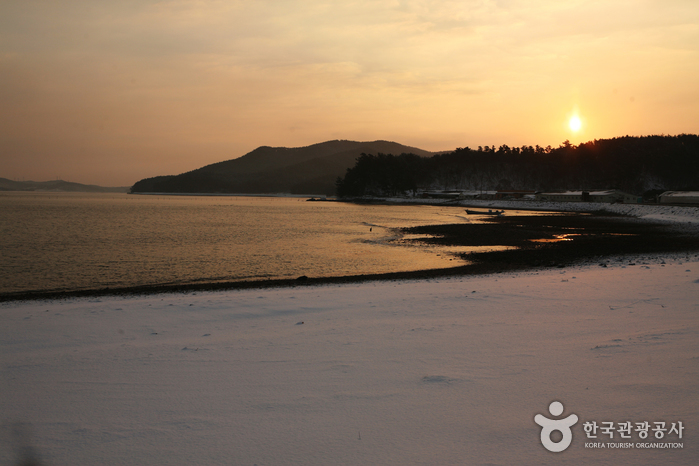
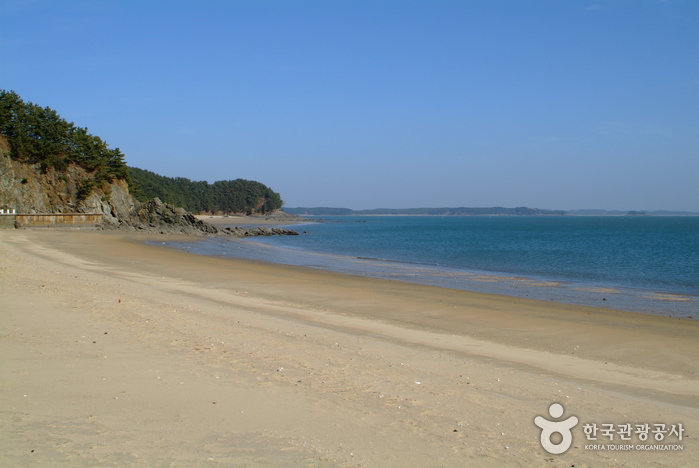
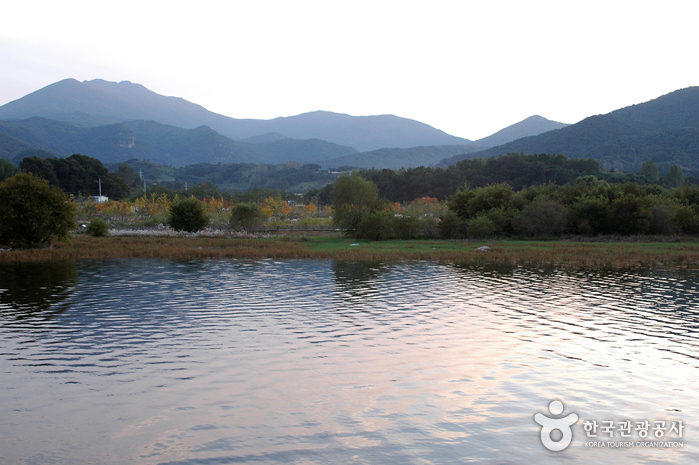
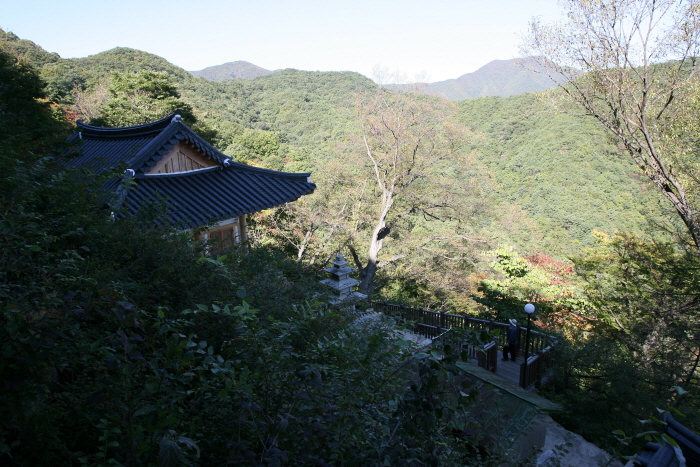
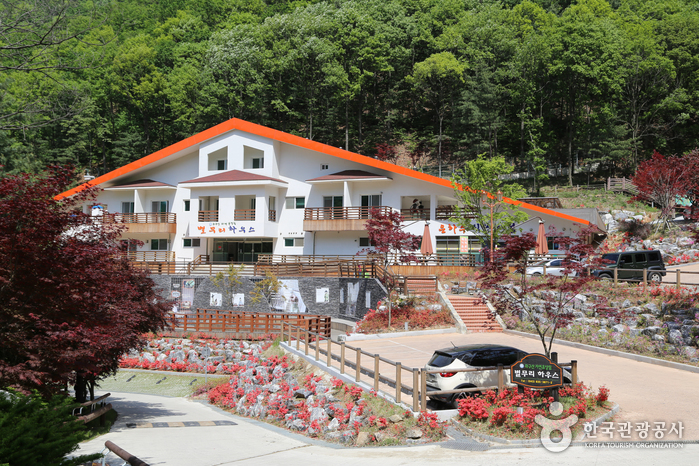
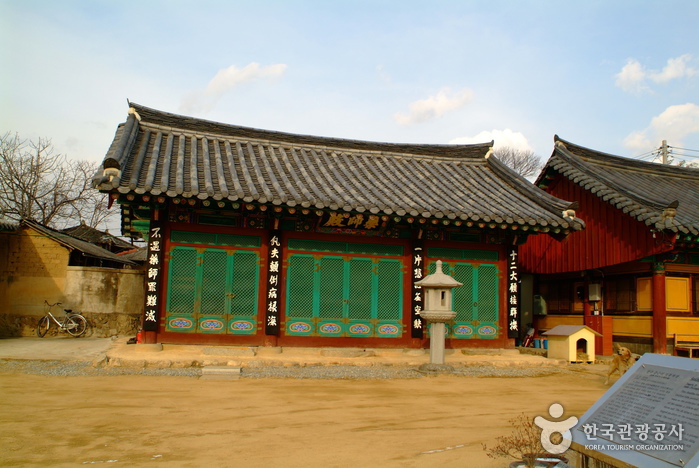
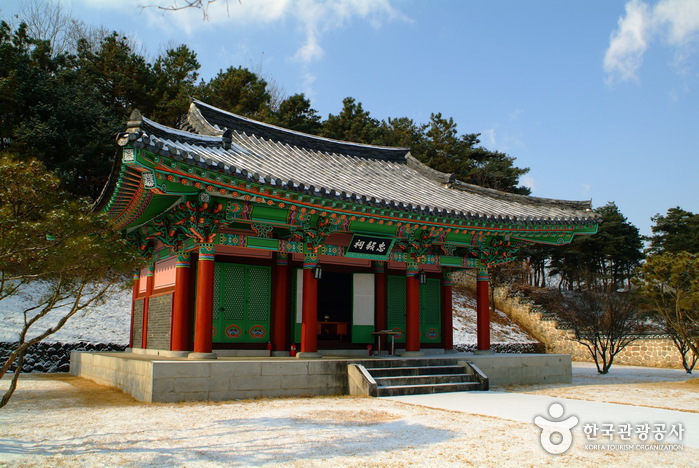
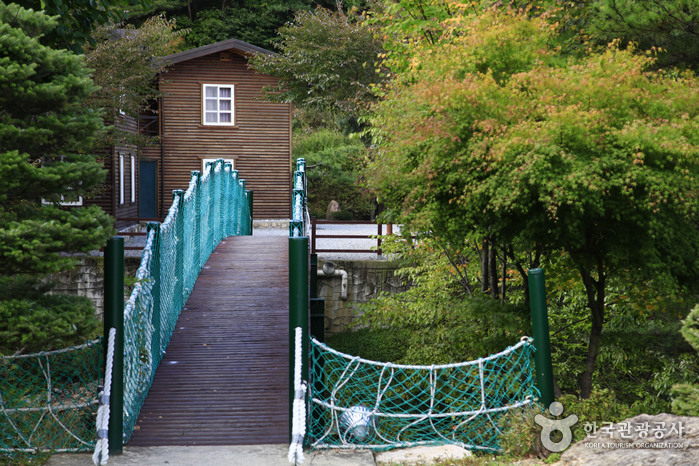
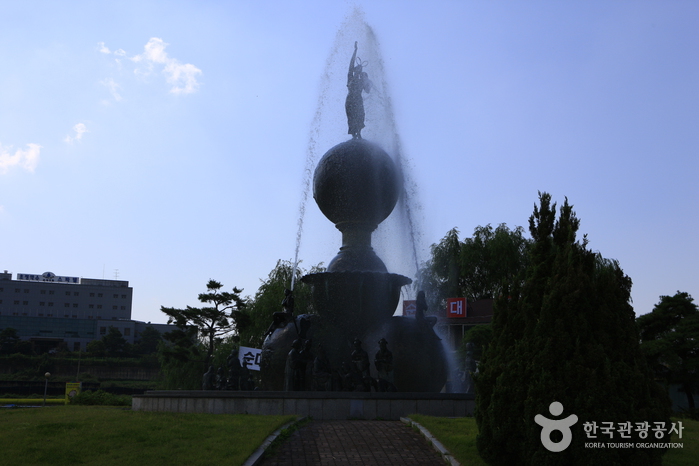

 English
English
 한국어
한국어 日本語
日本語 中文(简体)
中文(简体) Deutsch
Deutsch Français
Français Español
Español Русский
Русский